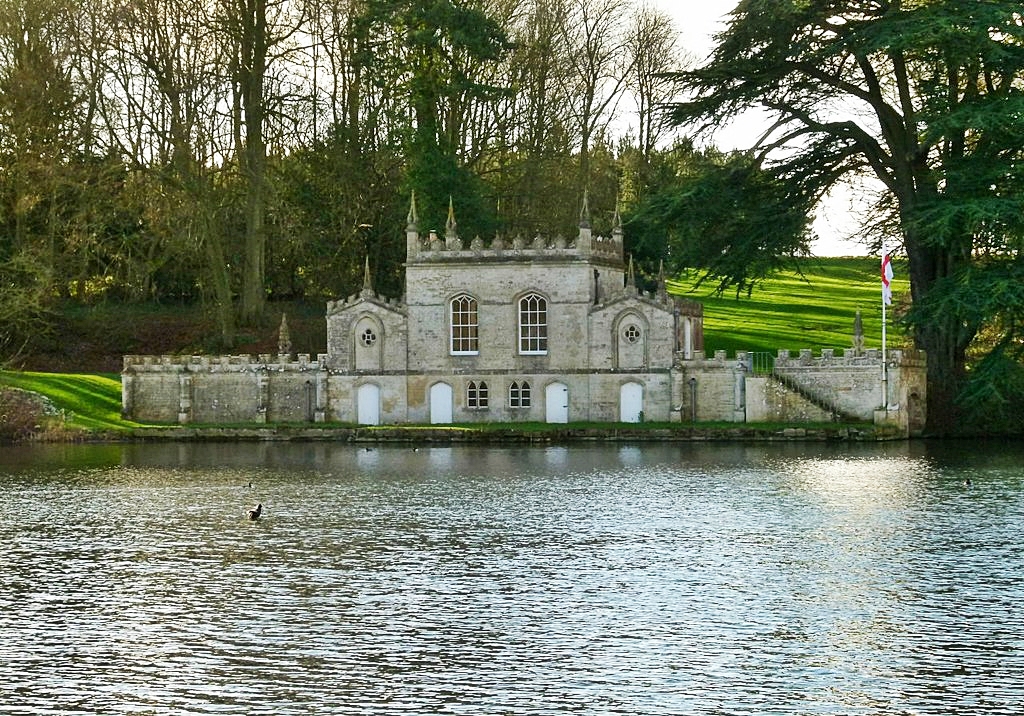Exton Hall on:
[Wikipedia]
[Google]
[Amazon]
Exton Hall is an English country house on the western edge of the village of Exton, Rutland,
 In the park is Fort Henry, a pleasure-house built in 1788 in the elegant Gothick style which overlooks lakes formed by the North Brook.
There is an extensive description of the parkland surrounding the hall in its own
In the park is Fort Henry, a pleasure-house built in 1788 in the elegant Gothick style which overlooks lakes formed by the North Brook.
There is an extensive description of the parkland surrounding the hall in its own
England
England is a country that is part of the United Kingdom. It shares land borders with Wales to its west and Scotland to its north. The Irish Sea lies northwest and the Celtic Sea to the southwest. It is separated from continental Europe b ...
, standing in its own extensive park.
The Hall
It was the family seat of the family of Sir James Harington and later the Noel family, Earls of Gainsborough for almost four hundred years. An earlier mansion burnt down in 1810 and is now a ruin which has grand gables and beautiful chimneys like many Elizabethan houses. The ruins are onHistoric England
Historic England (officially the Historic Buildings and Monuments Commission for England) is an executive non-departmental public body of the British Government sponsored by the Department for Digital, Culture, Media and Sport. It is tasked w ...
's Heritage at Risk Register
An annual ''Heritage at Risk Register'' is published by Historic England. The survey is used by national and local government, a wide range of individuals and heritage groups to establish the extent of risk and to help assess priorities for acti ...
, at priority category: C - "slow decay; no solution agreed".
The present Exton Hall was built in the 19th century close to the ruins of the original house. In 1869 a Roman Catholic chapel, dedicated to St Thomas of Canterbury was added, to a design by Charles Alban Buckler. The hall was used by elements of the U.S. Army Air Force during World War II. The hall is still in regular use as the private home of Henry Noel, Viscount Campden, and his family. The hall is not normally open to the public, though it is available for a limited number of exclusive private weddings.
The hall is one of the many stately homes in Britain associated with the Legend of the Mistletoe Bough.
Parkland
 In the park is Fort Henry, a pleasure-house built in 1788 in the elegant Gothick style which overlooks lakes formed by the North Brook.
There is an extensive description of the parkland surrounding the hall in its own
In the park is Fort Henry, a pleasure-house built in 1788 in the elegant Gothick style which overlooks lakes formed by the North Brook.
There is an extensive description of the parkland surrounding the hall in its own English Heritage
English Heritage (officially the English Heritage Trust) is a charity that manages over 400 historic monuments, buildings and places. These include prehistoric sites, medieval castles, Roman forts and country houses.
The charity states that i ...
listing. The park is extensive, and spreads across the parishes of Exton, Cottesmore, Greetham and Horn.
In 1948 Anthony Noel, 5th Earl of Gainsborough granted the United Steel Companies
The United Steel Companies was a steelmaking, engineering, coal mining and coal by-product group based in South Yorkshire and Lincolnshire, England.
History
The company was registered in 1918 and the following year saw a joining together of ste ...
a lease to quarry ironstone
Ironstone is a sedimentary rock, either deposited directly as a ferruginous sediment or created by chemical replacement, that contains a substantial proportion of an iron ore compound from which iron (Fe) can be smelted commercially. Not to be con ...
in the Park. Sundew
''Drosera'', which is commonly known as the sundews, is one of the largest genera of carnivorous plants, with at least 194 species. 2 volumes. These members of the family Droseraceae lure, capture, and digest insects using stalked mucilaginou ...
, the world's largest walking dragline, worked the land from 1957 until 1974 when mining ceased. Sundew then slowly walked to Corby
Corby is a town in North Northamptonshire, England, located north-east of Northampton. From 1974 to 2021, the town served as the administrative headquarters of the Borough of Corby. At the 2011 United Kingdom census, 2011 Census, the built-up ...
. Material was moved by a standard-gauge
A standard-gauge railway is a railway with a track gauge of . The standard gauge is also called Stephenson gauge (after George Stephenson), International gauge, UIC gauge, uniform gauge, normal gauge and European gauge in Europe, and SGR in Ea ...
railway with a loop of nine miles and a link to the exchange sidings at what is now Rutland Railway Museum's site to the West of Cottesmore Village. The railway was mostly operated by Yorkshire Engine Company
The Yorkshire Engine Company (YEC) was a small independent locomotive manufacturer in Sheffield, England. The company was formed in 1865 and produced locomotives and carried out general engineering work until 1965. It mainly built shunting engi ...
steam and diesel locomotives, Yorkshire Engine Company being a United Steel Companies subsidiary.
References
* Account of the Noel familyExternal links
* {{coord, 52.6925, -0.6382, type:landmark_region:GB, display=title Country houses in Rutland Grade II listed buildings in Rutland Grade II* listed buildings in Rutland Noel family Grade II listed houses Roman Catholic chapels in England